Hot Chips 2020 Live Blog: Xilinx Versal ACAPs (9:00am PT)
by Dr. Ian Cutress on August 18, 2020 12:00 PM EST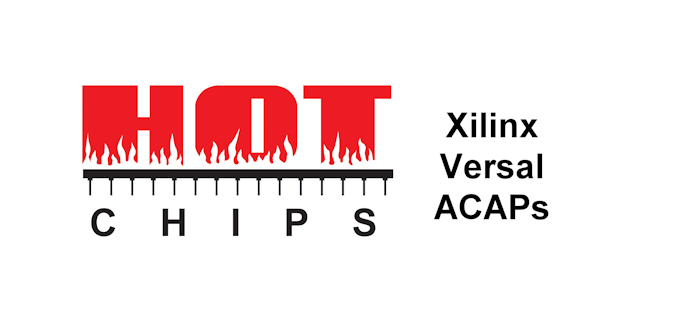
12:03PM EDT - ACAP = Adaptive Computing Acceleration Platform
12:04PM EDT - It's what Xilinx called its new FPGAs with lots of additional hardened controls
12:05PM EDT - Versal is the product family
12:05PM EDT - Premium is the top end
12:05PM EDT - Versal is designed to be future proof
12:05PM EDT - Compute acceleration with multiple engines
12:05PM EDT - Scalar, Adaptable, Intelligent engines
12:05PM EDT - DSPs
12:06PM EDT - SW Programmable infrastructure
12:06PM EDT - Built on TSMC 7nm FF
12:06PM EDT - 112G PAM4, 600G Ethernet Cores, 400G hardened Crypto engines
12:07PM EDT - Off-the-shelf connectivity, PCIe 5
12:07PM EDT - DDR4-3200 / LPDDR4-4266
12:07PM EDT - High bandwidth network on chip
12:08PM EDT - Can prioritize between latency and bandwidth requirements
12:08PM EDT - Guaranteed QoS
12:08PM EDT - All resources can be memory mapped
12:08PM EDT - Built in arbitration
12:08PM EDT - 112G PAM4 with hardened IP to reduce logic requirements
12:09PM EDT - Versal has 3 different types of memory slots - Memory controllers, Protocol Engines, Serdes
12:11PM EDT - Here's an example of a 1.2 Tb/s smart PHY creation using Versal Premium
12:11PM EDT - Focus effort on building custom logic for future standards
12:11PM EDT - Ports can be added wihtout using programmable logic due to the hardened IPs
12:12PM EDT - DCMAC: 600 GbE of ethernet with bifurcation at different rates
12:13PM EDT - MRMAC 100G Multi-rate Ethernet
12:14PM EDT - 400G High-Speed Crypto
12:14PM EDT - Encryption at line-read
12:14PM EDT - 40 channels
12:14PM EDT - AES-GCM 256/128
12:14PM EDT - Soft-IP around the hardened HSC Core
12:15PM EDT - Two flavors of Serdes
12:16PM EDT - 7nm is geared towards minimum-sized clock gates
12:17PM EDT - Integrated PCIe G5, DMA, CCIX
12:17PM EDT - Block is available at boot
12:18PM EDT - x16 PCIe G5
12:18PM EDT - 8 NVMe end-points up to 256 GB/sec
12:19PM EDT - NoC Packet Protocol - AXI Memory Mapping and Stream
12:19PM EDT - Traffic is packetized
12:20PM EDT - NoC is scalable depending on the Versal product
12:21PM EDT - One VNoC per 64b DDR channel
12:21PM EDT - VNoC can extend with die-to-die connections
12:22PM EDT - Stacked silicon interposers
12:23PM EDT - 4th Gen Stacked Silicon Interposer, TSMC 7nm CoWoS
12:23PM EDT - Up to 2x reticle limit
12:23PM EDT - Interposer is passive on 65nm
12:24PM EDT - 15.3 Tb/s chip-to-chip bandwidth over 20k wires
12:25PM EDT - Now use cases
12:26PM EDT - Against Prev Gen Ultrascale+ VU13P
12:29PM EDT - 92B Transistors in Premium
12:30PM EDT - Q&A Time
12:31PM EDT - Q: Latency through NoC Access point? A: NoC is user programmable - can provide QoS and latency requirements on the NoC. The latency that is experienced is dependent on those settings. There's documentation on the NoC for specific scenarios in simulation and design
12:32PM EDT - A: Constraints on PL kernels for recompiles for moved them around? A: Have to place them in programmable logic patterns that are repeated. Similar constraints between devices. Need better documentation
12:33PM EDT - Q: Total die size? 92B? A: No comment on total die area. Applies to largest stacked silicon device
12:34PM EDT - Q: LPDDR5 support? A: No comment.
12:34PM EDT - Q: HBM bandwidth? A: Cannot comment at this point. Keep an eye on future announcements
12:36PM EDT - Q: Can external chiplets attach to NOC? A: Theory yes, but I don't think that any of them exist today
12:37PM EDT - That's a wrap. Next talk for me is the Tofino2 switch chip at 10:30am PT.



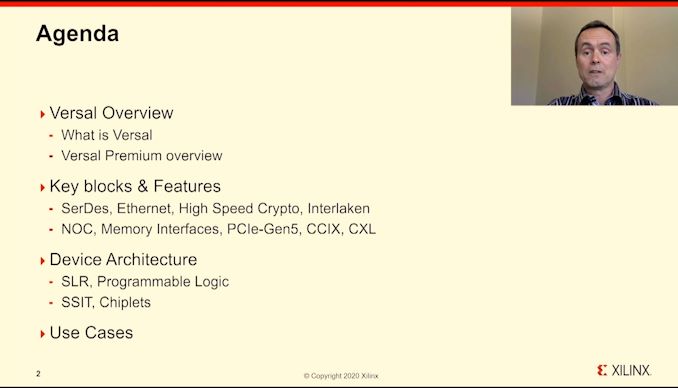
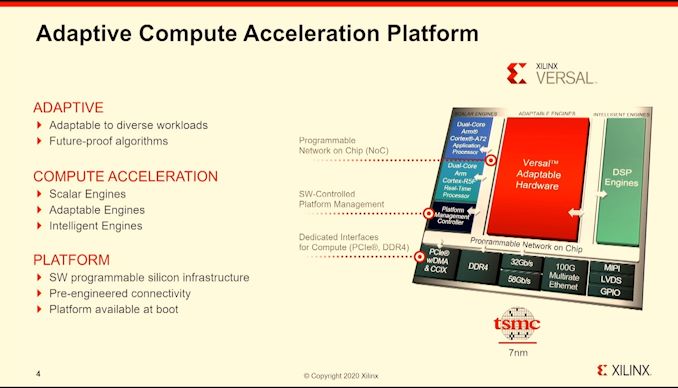
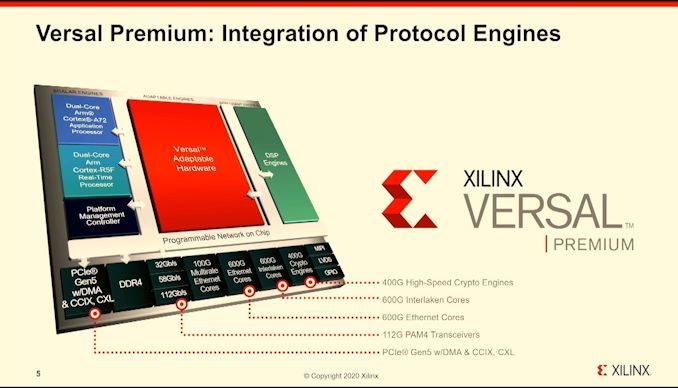
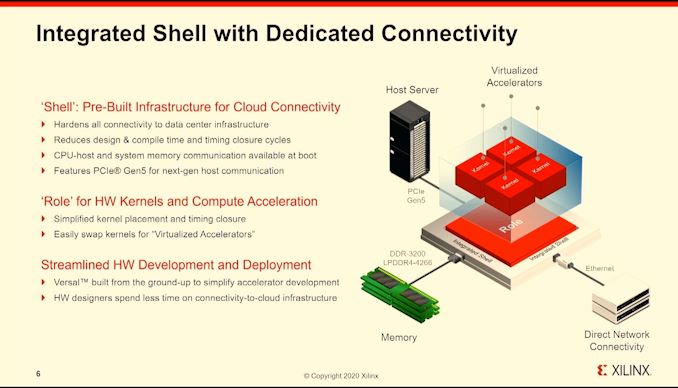
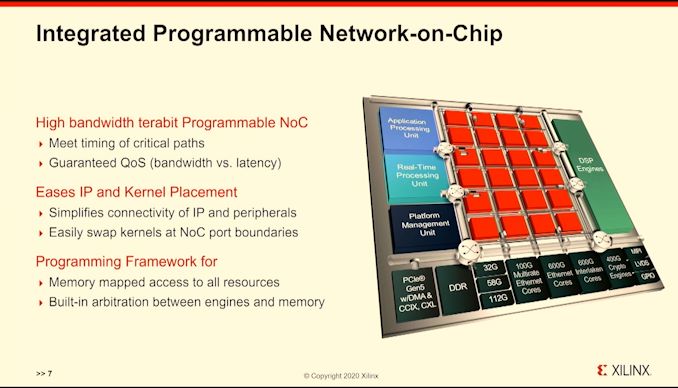

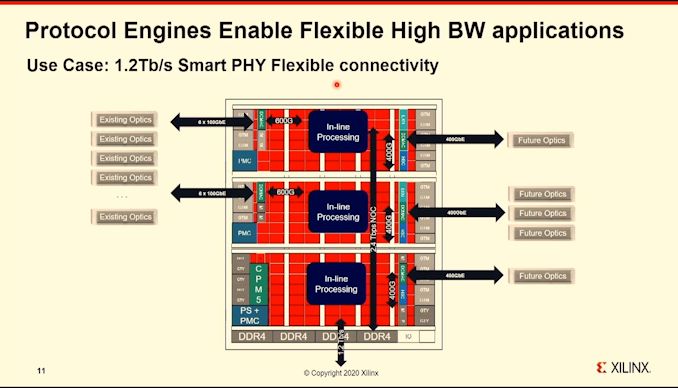
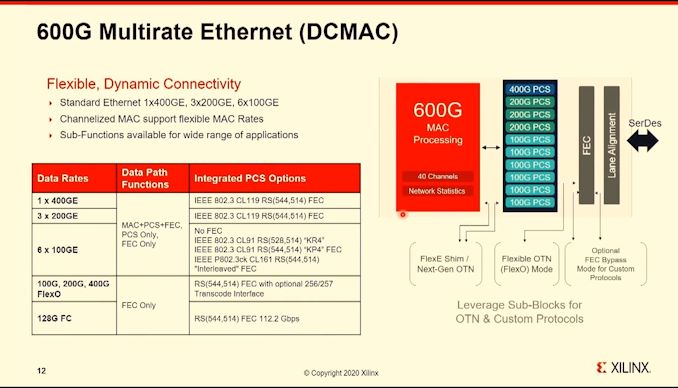
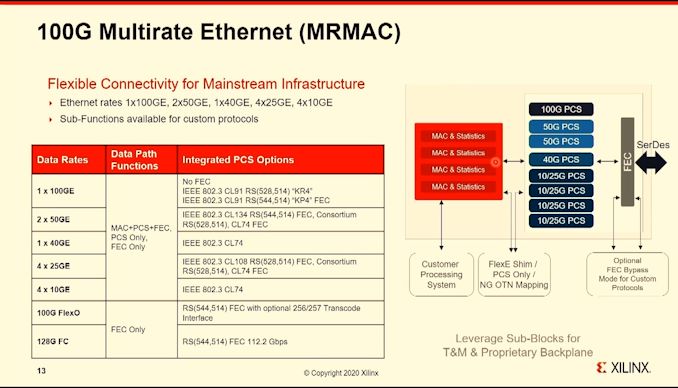

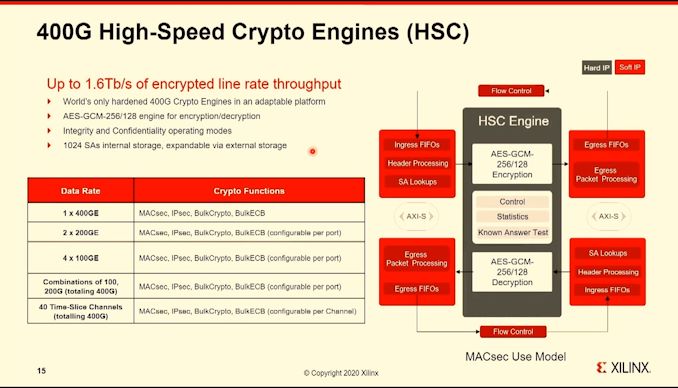
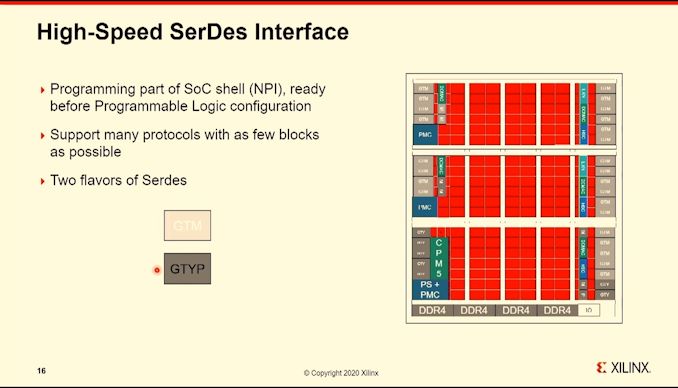

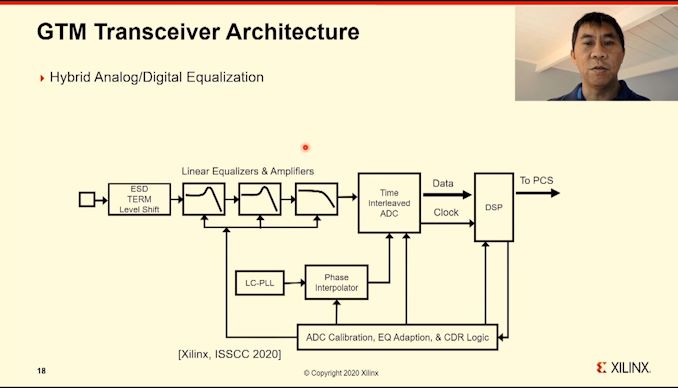
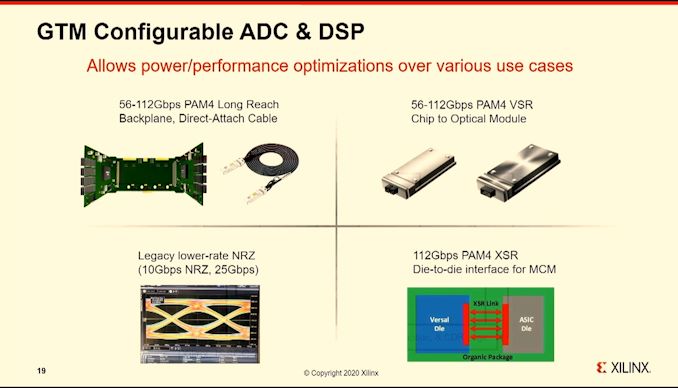
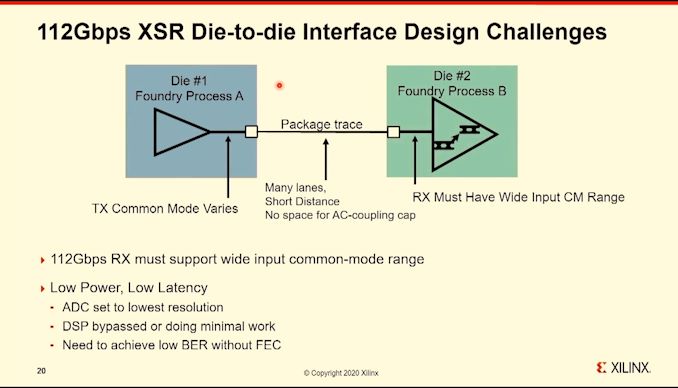
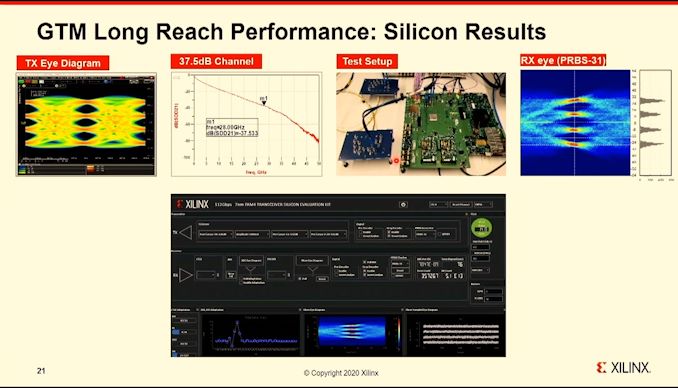
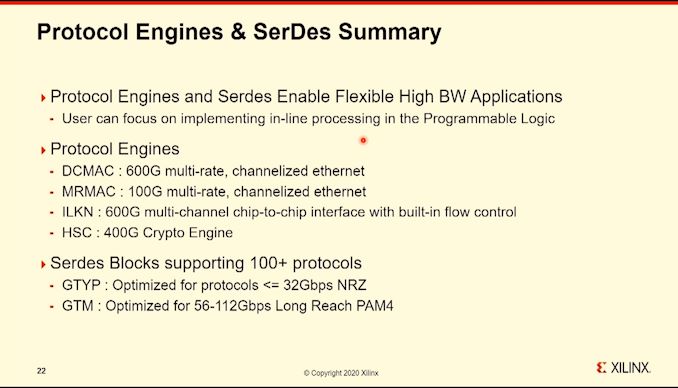

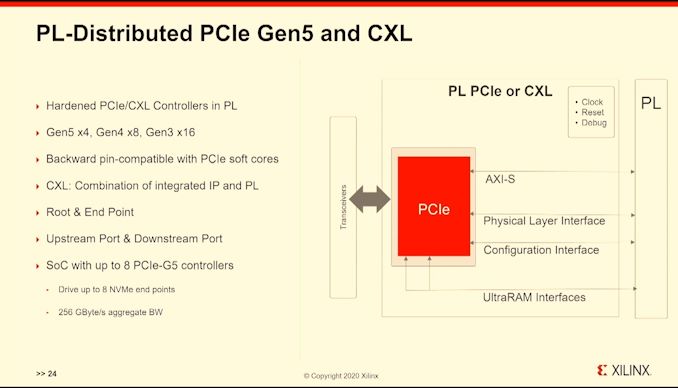
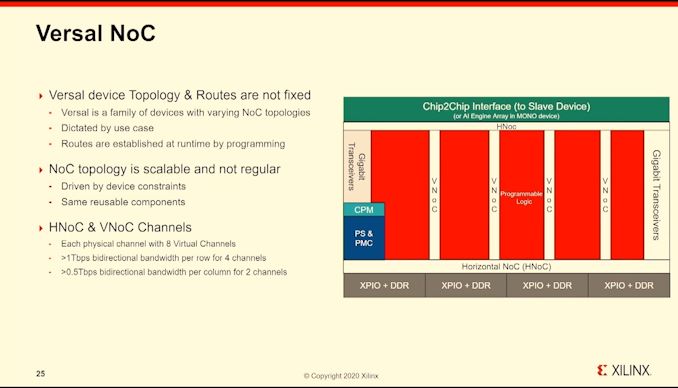
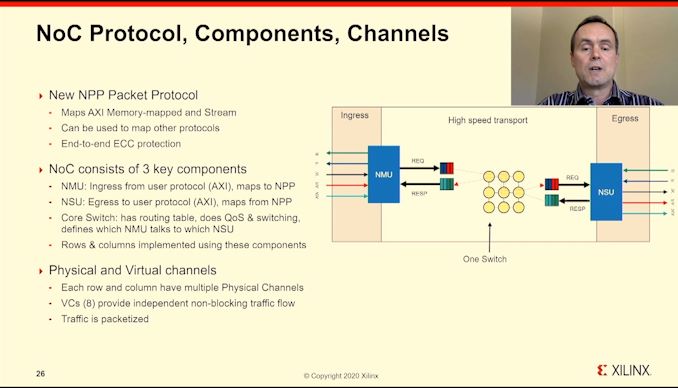
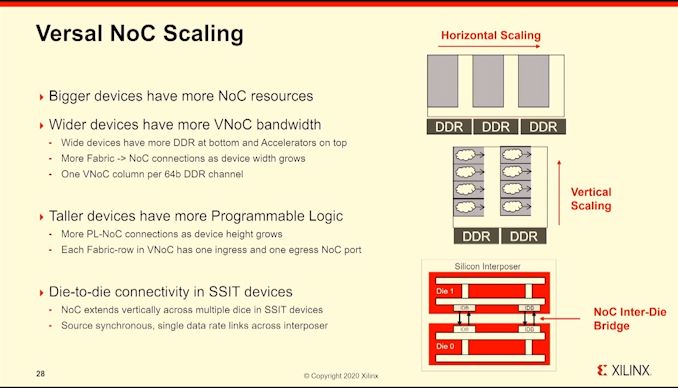
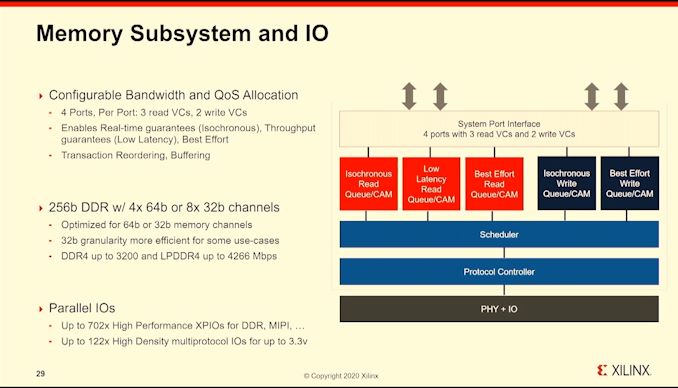
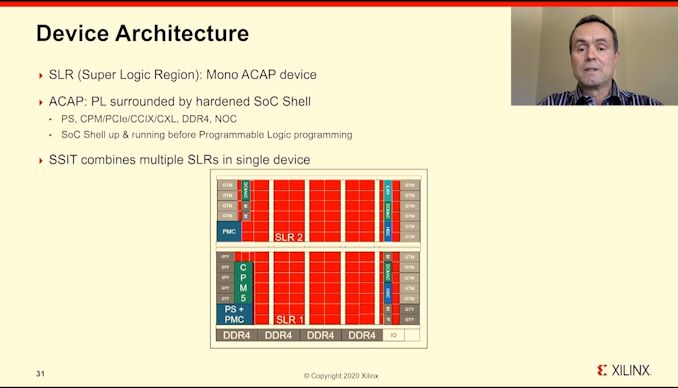


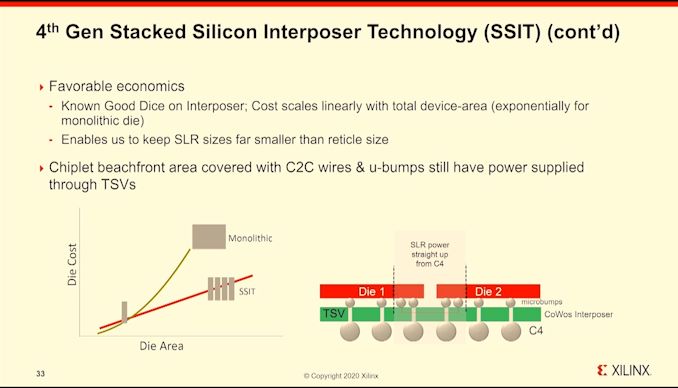
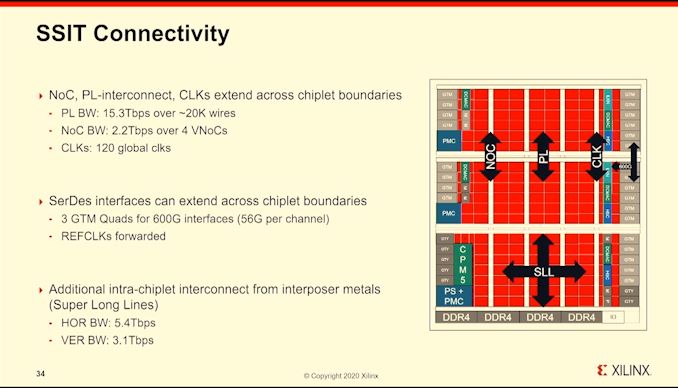

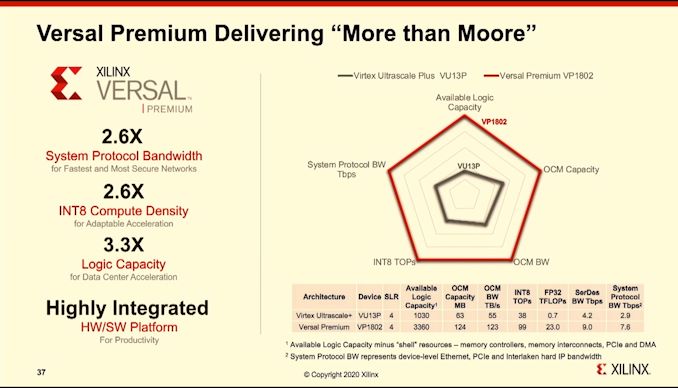
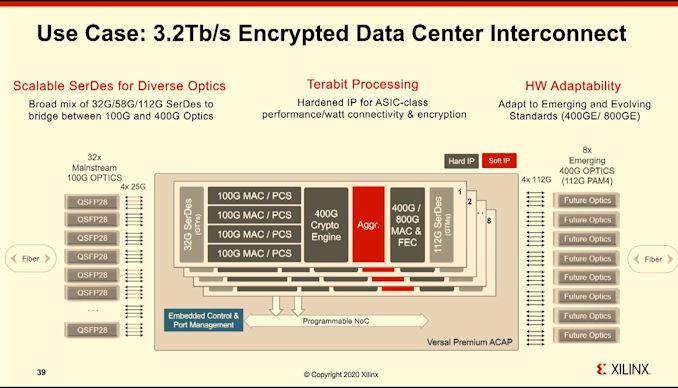

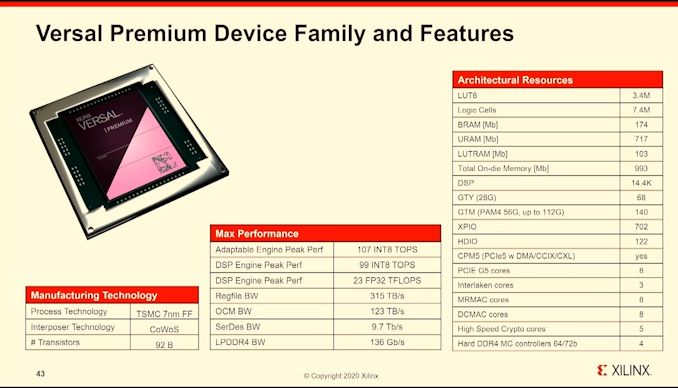
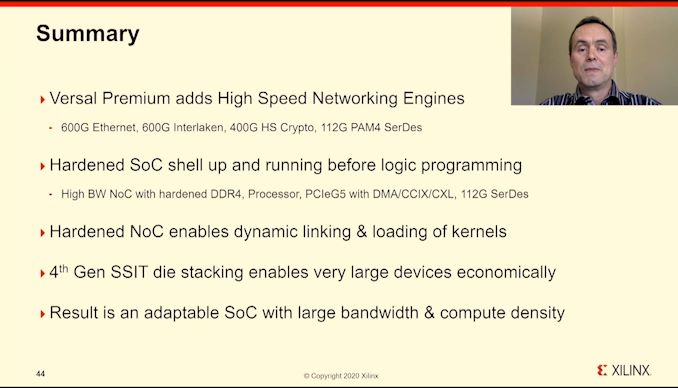








1 Comments
View All Comments